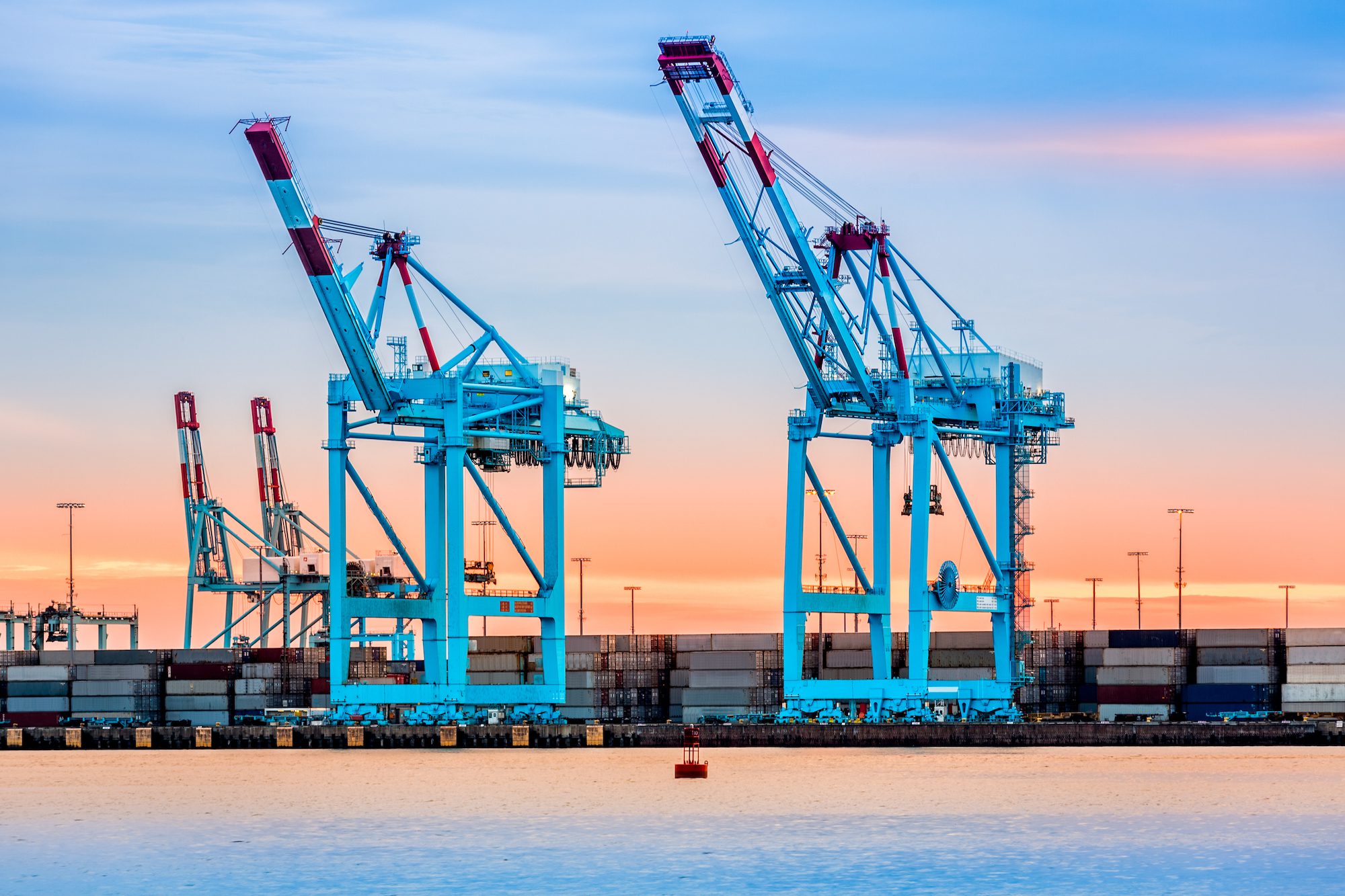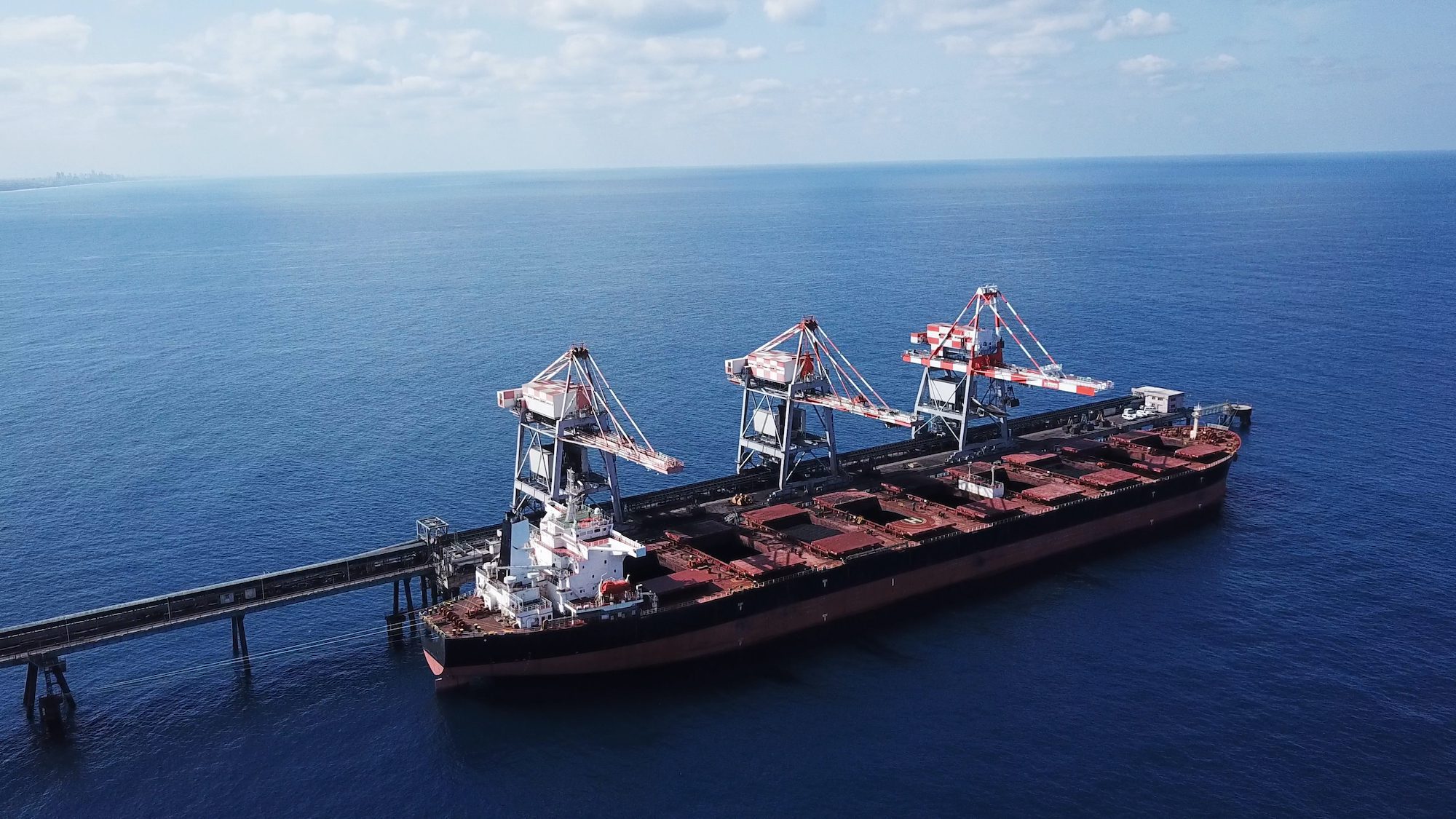By Augusta Saraiva and Josh Eidelson (Bloomberg) —
As the US’s largest ports in California moved record amounts of cargo amid pandemic-induced supply-chain bottlenecks, union dockworkers strengthened their indispensable role in the nation’s logistics network.
But the expiration of labor contracts with more than 22,000 West Coast port workers this summer could throw a wrench in the recovery plans of the twin hubs of Los Angeles and Long Beach, which handle about 42% of all US containerized trade with East Asia.
Contract negotiations between the International Longshore and Warehouse Union and about 70 employers represented by the Pacific Maritime Association for new contracts started May 10. The sides have said they’re committed to keeping cargo moving throughout the process. This would avoid a repeat of the delays and congestion that hampered ports from San Diego to Bellingham, Washington during the 2014 talks that extended into 2015.
Here’s a look at what’s at stake:
When does the contract expire?
July 1. Originally set to end in June 2019, the parties in 2017 agreed to extend the end date to June 2022, after roughly two-thirds of union members voted in favor, avoiding cargo disruptions in exchange for higher wages and pensions. In November, port workers declined an offer by employers to lengthen the existing pact for another year.
Who’s involved?
The contracts apply to members of the ILWU’s Coast Longshore Division — marine clerks, foremen and longshore workers employed at 29 West Coast ports. The PMA, meanwhile, counts the biggest container carriers and terminal operators including A.P. Moller-Maersk A/S and Cosco Shipping Holdings Co. among its members.
The White House is on standby in case it needs to reprise its actions in the 2014 talks. Back then, a nine-month dispute that caused disruptions and shipping delays only ended after the Obama administration intervened. It took the shipping industry about the same period after a deal was reached in February 2015 to return to normal service, according to an analysis by Copenhagen-based Sea-Intelligence.
“We don’t need to get involved in this negotiation unless we have to,” Labor Secretary Marty Walsh said on Bloomberg Television May 6.
Why do these talks matter?
Two years of strong consumer spending have seen record cargo volumes hammer West Coast ports with congestion, leading to an unprecedented supply-chain crisis. Although the situation has improved, new economic gridlocks are threatening the recovery. As companies and consumers worldwide feel the repercussions of China’s Covid-19 lockdowns, the domino effect of increased arrivals that had been held back from the US due to the restrictions has yet to peak at West Coast ports, according to the leaders of the ports of Los Angeles and Long Beach.
“When dockworkers strike, the impacts are felt by everybody,” said Katy Fox-Hodess, an employment-relations lecturer at Sheffield University Management School in the UK and former ILWU organizer.
What’s at stake?
The talks are unfolding at a moment of unusual clout and vigor for the long-declining US labor movement. Unions secured surprising election victories at a Staten Island Amazon.com Inc. warehouse and at dozens of Starbucks Corp. locations, establishing footholds at firms that had successfully resisted organizing for decades. Leaders from both of those campaigns were invited to the White House where they met President Joe Biden, who has pledged to be “the most pro-union president leading the most pro-union administration in American history.”
New union campaigns have also emerged in recent months among staff for Apple Inc., Trader Joe’s Co. and the US Congress. An unusually tight labor market has helped embolden some employees to organize, and has boosted union members’ leverage to demand more at the bargaining table or threaten strikes.
In the seven years since West Coast port workers have negotiated a full, fresh contract, the hardships of laboring through the Covid-19 pandemic, employers’ recent robust profits, and the rapid acceleration in inflation could all drive up ILWU members’ expectations for winning substantial raises.
The current focus on mitigating supply-chain disruptions and the near impossibility of running the ports smoothly without these workers’ expertise could embolden them to hold out for bigger concessions from management and wield the strike weapon if the companies aren’t cooperative.
“We make no apologies for achieving wages that allow workers to provide for their families,” ILWU International President Willie Adams said in a May 6 statement.
The basic “straight-time” hourly wage for ILWU members is $46.23, according to the latest ILWU-PMA contract. They would therefore make at least $96,000 for a 40-hour week, above California’s median household income of $79,000.
What about automation?
The employers’ right to automate their operations has become a prominent issue in the contract. The 2002 deal introduced new technologies such as scanners and character-recognition technology, while the 2008 pact explicitly authorized automation.
Last year, Total Terminals International LLC announced its intention to fully automate its Long Beach operations, a project the ILWU strongly opposed. This would make it San Pedro Bay’s fourth terminal with some automation out of the port complex’s 14 hubs.
A week before the 2022 talks started, the PMA released a report extolling the benefits of automation. The study found that two of the twin ports’ automated terminals have processed containers twice as quickly as conventional ones, while paid hours rose by almost one-third.
ILWU Coast Committeeman Frank Ponce de Leon called the report a “self-serving document,” saying there hadn’t been “an overall increase in productivity at the ports, just a shell game to mask the human cost of job destruction.”
“Automation itself is a self-fulfilling prophecy — the more automation you use, the better it gets, and the less you need human intervention,” said Stephanie Loomis, vice president of international procurement at freight forwarder CargoTrans Inc. “The union realizes this is their livelihood, and the livelihoods of potentially the next generation. So this is not going to go easy for either side.”
Will they get a deal?
Both sides have repeatedly said they will reach an agreement, and are committed to do so without disruptions. But whether that happens by July 1 is unlikely, as both parties usually agree to extend the contracts to allow themselves extra time to negotiate.
“It doesn’t matter that the contract isn’t done by July 1, that’s not the litmus test,” PMA President Jim McKenna said in an interview last month. “The litmus test is the contract is done, and there’s been no disruption. I don’t care if it’s done three months after it expires.”
© 2022 Bloomberg L.P.
Unlock Exclusive Insights Today!
Join the gCaptain Club for curated content, insider opinions, and vibrant community discussions.

 Join The Club
Join The Club













